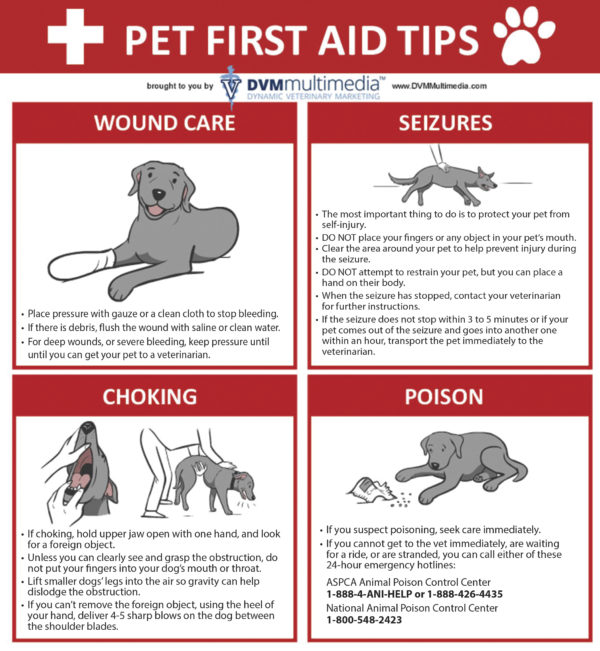April is Pet First Aid Awareness Month. Below is an amazing article from todaysveterinarypractice.com with helpful tips to be prepared for anything when it comes time to your pets. Stop in store to look at our first aid kits and supplements to add to your pooches med bag!
Whether an injury is small or large—say, you cut your pet’s toenail too short or they dislocate a leg during a hike—a first aid kit is crucial to making sure an injured pet gets on the path to recovery. Keep one at home and another in the car to ensure you’re always prepared to patch the problem before taking your pet to the vet.
Here are some common items to keep in a pet first aid kit and what you may need them for.
- Medical and vaccination records
- Bottled water for drinking or flushing wounds
- Collapsible bowls
- Kibble and/or treats to coax them to the car or a safer place
- Small flashlight
- Soft muzzle, leash, and collar
- Gloves for you to keep from introducing additional foreign material
- Tweezers for removing stingers, ticks, and other foreign materials
- Clean towels to clean a wound, act as stretcher, or wrap an anxious pet in
- Emergency blanket for cold environments or a pet that is in shock
- Rectal thermometer as well as a water-based lubricant
- Antiseptic and wet wipes for everything from wiping their paws to disinfecting a wound
- Canine-specific aspirin/ibuprofen (felines should only be given NSAIDs provided by a veterinarian)
- Benadryl for mild allergic reactions to stings, bites, or ingestions
- Cold compress for decreasing swelling and inflammation
- Gauze, tape, elastic wrap, scissors
- Cotton balls or swabs
- Burn relief gel
- Milk of Magnesia or activated charcoal (do NOT induce vomiting unless consulting a veterinarian or poison control center first)
- Saline solution for flushing wounds/eyes
- Eye dropper or syringes for flushing wounds or administering oral medications
- Antibiotic ointment to help prevent infection, relieve pain, and act as a barrier from bacteria and germs
- Styptic powder for stopping minor bleeding
- Butterfly wound closure
Keep everything in a watertight bag and accessible place. Remember that first aid does not take the place of veterinary care and you should always alert your veterinarian of unusual behavior or injuries.
To see the original article click the link below
https://todaysveterinarypractice.com/pet-owner-resources/april-is-pet-first-aid-awareness-month/

